THE DARK SIDE OF AMERICAN POPULISM.TRUMP'S AMERICA FIRST POLICY IS A RIGHT WINGS POLITICS,TO DESTROY WESTERN DEMOCRACY AND MAKING WHITES FEEL EMBATTLED AND AGGRIEVED IS CENTRAL TO THE TRUMP PRESIDENCY.
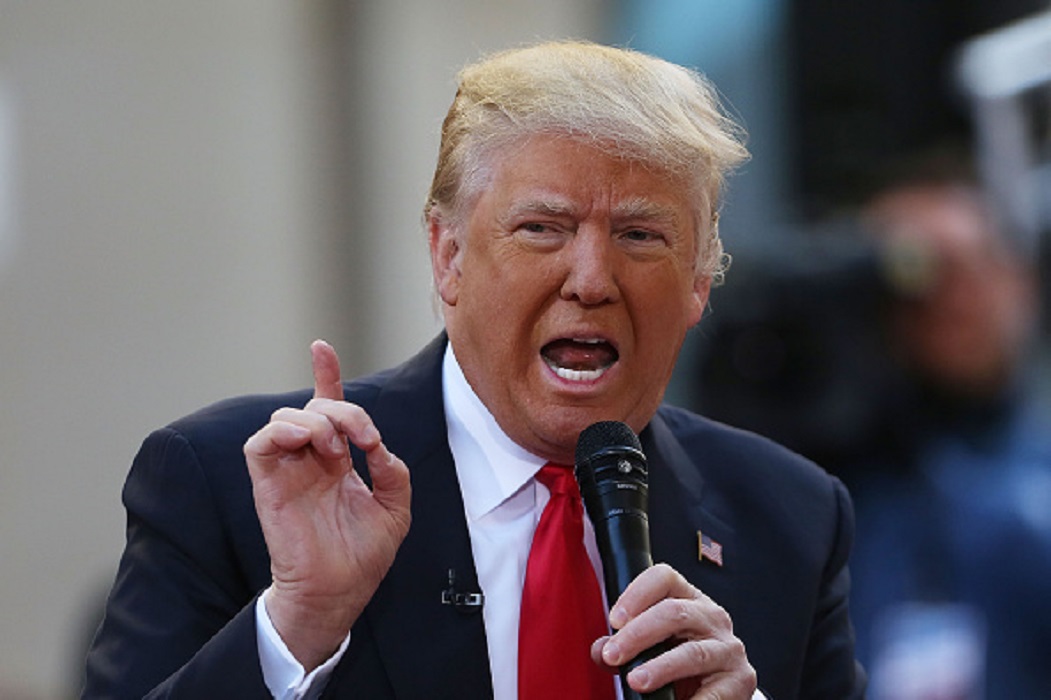 Democrats have suggested that Trump is simply unwilling to alienate
the segment of his white electoral base that embraces bigotry. The
president has forcefully rejected any suggestion he harbors any racial
or ethnic animosities.
Democrats have suggested that Trump is simply unwilling to alienate
the segment of his white electoral base that embraces bigotry. The
president has forcefully rejected any suggestion he harbors any racial
or ethnic animosities.
Trump’s harping on the interests of the middle class and working people, like Richard Nixon’s paeans to the silent majority, can be interpreted as narrowing down the category of “Americans” so as to contrast it against un-Americans dividing " them ” into those who are and aren’t in the middle class, those who do and don’t work, those who are voiceless and those whose voices are amplified by the media. But this interpretation is too one-sided, effacing the effervescence of so many Trump supporters that’s apparent in journalistic reports (see below). His supporters are thrilled that in Trump, they’ve found someone who expresses their concerns about the future of America. As we’ll see, these concerns fit the usual pattern of politics in modern nation-states, in which public policy is designed to ameliorate the social and economic problems of one’s conationals.During the 2016 campaign, Trump’s rhetoric was caustic and divisive. He described differences between groups as if they were essential and irreduceable; he named Mexicans and Muslims as having special attributes, lesser qualities, and who were in need of special measures, such as a “complete shutdown” on Muslims entering the US and a 2,000-mile border wall to keep out Mexican “rapists and murderers”Trump is a populist. But again, the policies he’s now pushing are conspicuously pro-elite. While a populist need not conform to any fixed economic agenda, it’s still worth asking: Is it unusual for a populist to ride a wave of anti-elite sentiment to power and then pivot immediately to policies that serve elite interests?Populism might be ideologically malleable, but one would expect there to be some consistency between what a candidate says on the trail and what she does in office.Trump met with his first foreign ally just a few days after winning the U.S. presidency. But it wasn’t one of the world’s leading statesmen who got the invitation to Trump Tower. It was Nigel Farage, a man once considered a footnote in British politics but who, in 2016, found himself on the snug inside of one of history’s hairpin turns.As the face of the United Kingdom Independence Party, a right-wing group on the fringe of British politics, Farage campaigned for 17 years for the U.K. to leave the European Union, styling himself as a “middle-class boy from Kent” who was not afraid to tell hard truths about the failures of the European project, from out-of-control immigration to the coddling of radical Islamism. On June 23, British balloters finally granted Farage his wish, voting to leave the E.U. in the stunning Brexit referendum. The result was one that Europe’s pundits, pollsters, bookies and politicians said would never happen. Farage then spent weeks in the U.S. stumping for Trump, who took to calling himself “Mr. Brexit.Trump is a populist. But again, the policies he’s now pushing are conspicuously pro-elite. While a populist need not conform to any fixed economic agenda, it’s still worth asking: Is it unusual for a populist to ride a wave of anti-elite sentiment to power and then pivot immediately to policies that serve elite interests? Populism might be ideologically malleable, but one would expect there to be some consistency between what a candidate says on the trail and what she does in office.
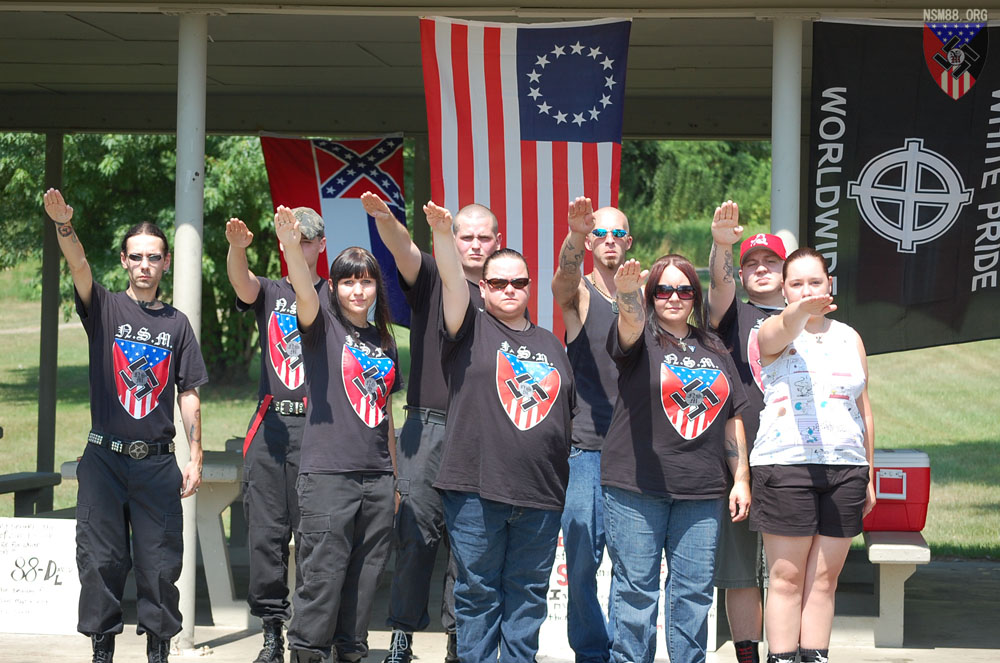
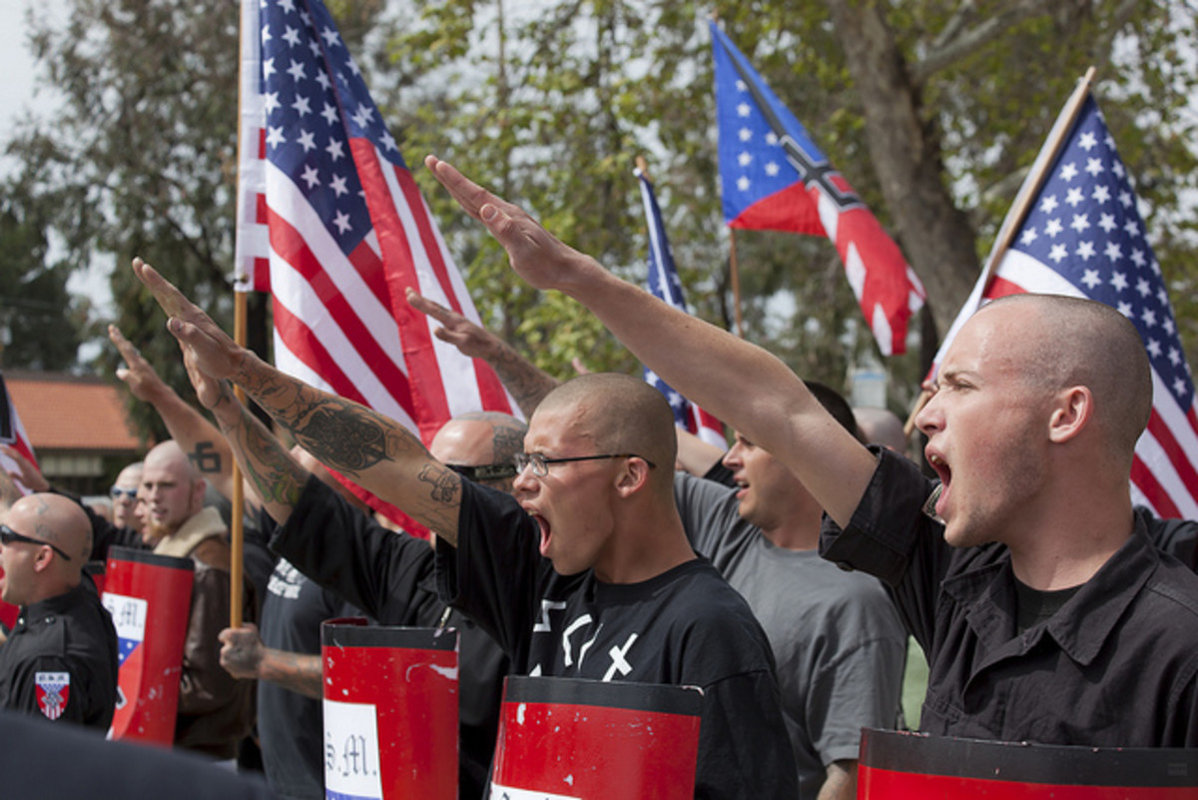
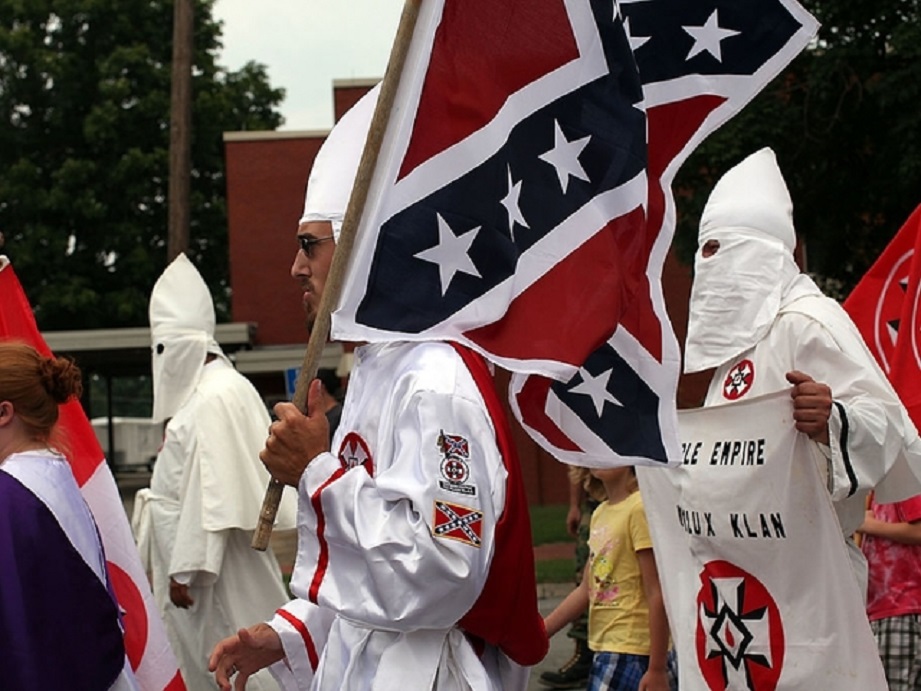 The North Carolina chapter of the Ku Klux Klan will hold a rally at
Charleston South Carolina’s Statehouse to protest efforts to
remove the Confederate battle flag. Tracking
the evolution of what's worn by white supremacist groups specifically
the KKK shows that they have reached what looks like the end stage of a
longterm image overhaul. Racism is inextricable from the character of
past- and current-day America, but the election of Donald Trump
validated a group that used to feel the need to remain hidden.
Accordingly, the clothing of white hate has changed: It, too, has become
more mainstream.
The North Carolina chapter of the Ku Klux Klan will hold a rally at
Charleston South Carolina’s Statehouse to protest efforts to
remove the Confederate battle flag. Tracking
the evolution of what's worn by white supremacist groups specifically
the KKK shows that they have reached what looks like the end stage of a
longterm image overhaul. Racism is inextricable from the character of
past- and current-day America, but the election of Donald Trump
validated a group that used to feel the need to remain hidden.
Accordingly, the clothing of white hate has changed: It, too, has become
more mainstream.
Sociotropic nationalism explains, too, which particular rats Trump wanted to kill. Trump promised to fight against free trade and immigration on the grounds that they were hurting Americans’ interests by causing economic and social problems “here at home.” Trump had ingeniously come up with a domestic policy almost entirely shaped by the fundamental sociotropic-nationalist binary, us versus them: protectionism to bring back American jobs from abroad; border control to prop up wages at home and keep out terrorists and criminals. If there’s one thing that everyone understands, one heuristic that the poorly informed can use to judge a politician, it’s a politician’s sheer commitment to helping the domestic “us.” What better metric for this commitment than the politician’s obsession with policing the geographical border between us and them? “Without borders,” Trump frequently emphasized, “we don’t have a country.” Trump’s policies, his behavior, his character, and his rhetoric are all “deplorable.” But if we stop our analysis with moral condemnation, we put a cordon sanitaire around him, letting the system that produced him off the hook. He didn’t come from Mars, and his success isn’t inexplicable. To the extent that the explanation isn’t his supporters are crazy or evil, then we have to recognize that something else is at work: that he seems, to many people, to be a politician who finally does what politicians are supposed to do.Trump doesn't seem to understand or believe that individual people choose (or are forced) to migrate. What the president keeps describing is a system where governments shuffle people around based on some non-existent dollar value, and the U.S. should be acquiring specific nationalities as though they were stocks. It's also hilarious that Trump can't wrap his head around why people from Norway, the happiest country in the world, with a robust social safety net and nationalized health care, wouldn't want to move here.But of course, even if the president had a basic grasp of how immigration worked, on literally any level, that wouldn't cover up how nakedly racist this is. And really, it's just a small step away from how racist he's already proven to be as president. We saw some of this already last December, when he allegedly said that all Haitians have AIDS, but the White House quickly came to his defense and denied it ever happened.
 Thousands
gather with candles to march along the path that white supremacists
took the prior on the University of Virginia Campus in Charlottesville,
16 August 2017.
Thousands
gather with candles to march along the path that white supremacists
took the prior on the University of Virginia Campus in Charlottesville,
16 August 2017.
This effect was obvious after Trump’s response to a white supremacist rally in Charlottesville, Virginia. After days of silence on the rally, in which dozens of people were injured and one counter-protester was killed, Trump condemned the actions of both the participants and those who protested them “violence on both sides”. White supremacists celebrated. Mr Trump later issued a statement condemning Nazi and white supremacist groups, before again returning to the rhetoric that blamed both sides.Historically, white supremacist beliefs have influenced a myriad of mass efforts to perpetuate racial and ethnic oppression. The mid-Atlantic slave trade imported millions of Africans to the U.S. for forced and involuntary labor, leading to multi-generational servitude and wrongful deaths. Southern Jim Crow laws mandated the legal segregation of public facilities for whites and African Americans, supporting the belief in black inferiority. The disenfranchisement of African Americans at the ballot box was exercised through unfair political gerrymandering, physical intimidation, and deceptive financial penalties, from the Reconstruction period to the modern civil rights movement.Charlottesville, Virginia is home to the University of Virginia, founded by Thomas Jefferson; he was a slave owner, but today stands as a symbol of the US’s egalitarian ethos and political myth. On the eve of the rally, the university’s Charlottesville campus became the site of a march of torch-bearing white supremacists, evoking the Klan rallies seen throughout the 20th century. Tense clashes between marchers and counter-protesters ensued, and the next day, the rally itself turned violent.Radical right marchers turned up along with citizen militia groups (their guns on full display thanks to open carry legislation) and clashed with anti-fascist and other groups who stood up to them. Then 20-year-old James Alex Fields Jr ploughed his car into a group of protesters, and has now been charged with the second degree murder of Heather Heyer, who died after he ran into her.The context for these events is as old as the US itself. The country was borne of violence: a revolution that overthrew British rule, violent suppression of the Native American population, a violent Civil War that took over 600,000 lives, and a philosophy of “manifest destiny” that expanded the American nation across a continent.Much of this violence was social and political. The Civil War has been seen as the true American revolution; it pitted a social and political order based on rugged individualistic capitalism against one of plantation economics and strong social hierarchy, including the system of slavery. The southern model was defeated, the slaves emancipated, and Confederate leaders and sympathisers left to mourn their project as a “lost cause”. But the culture of white supremacy was far from defeated, and radical right-wing social movements and organisations have troubled the US ever since.
But on August 12, some seven months into Donald Trump’s presidency, Charlottesville saw a far uglier side of the US on display: a Unite the Right rally bringing together people and organisations who resented the proposed removal of a statue of Confederate Civil War general, Robert E Lee. The context for these events is as old as the US itself. The country was borne of violence: a revolution that overthrew British rule, violent suppression of the Native American population, a violent Civil War that took over 600,000 lives, and a philosophy of “manifest destiny” that expanded the American nation across a continent.Much of this violence was social and political. The Civil War has been seen as the true American revolution; it pitted a social and political order based on rugged individualistic capitalism against one of plantation economics and strong social hierarchy, including the system of slavery. The southern model was defeated, the slaves emancipated, and Confederate leaders and sympathisers left to mourn their project as a “lost cause”. But the culture of white supremacy was far from defeated, and radical right-wing social movements and organisations have troubled the US ever since.The most notorious group, the Ku Klux Klan, was borne of Southern Democrats’ resentment of emancipation; over the years, it has been invigorated by other radical right groups founded on a powerful ideology of “Christian Identity”, a commitment to the racial superiority of white people and a mission to secure white power and dominance. (The Southern Poverty Law Centre has spent decades documenting and mapping their prevalence, discourses and actions across the US.)Trump failed to name the right-wing violence as white supremacy, or to specifically condemn it; instead, he lamented the violence on all sides.He even managed to stay on the economy when the conversation first turned to Charlottesville. When asked about CEOs leaving his advisory council over his failure to condemn neo-Nazi and KKK violence, he responded, “We want jobs, manufacturing in this country. They’re outside of the country, they’re having their product made outside. We want products made in the country.
This special section of the Seattle Civil Rights and Labor History Project documents the history of Washington State's 1920s chapter of the most infamous white supremacist organization in American history, the Ku Klux Klan (KKK).The Washington State Klan during the 1920s was part of the second of three waves of KKK activity in America. The second KKK was founded in 1915 and gained significant membership immediately following World War I. Though short-lived, it was a powerful anti-immigrant, anti-Catholic, anti-radical, white supremacist organization that promoted "100 percent Americanism." The second KKK claimed over 4 million members across the country; briefly dominated state legislatures of Colorado, Indiana, and Oregon; and in 1924 shaped presidential politics and helped pressure politicians to pass the most severe immigration restriction in the history of the United States. Following immigration restriction and a series of leadership scandals, the second KKK collapsed and was largely moribund by 1928.The second KKK was a mass movement that invoked the memory of and built upon the first KKK, which was a terrorist organization founded by white supremacists in the U.S. South. The first KKK's violent "night riding"-- in which hooded vigilantes used lynchings, whippings, and torture to intimidate recently freed slaves and their white allies -- played a crucial role in the disenfranchisement of African Americans at the end of the Civil War in the 1860s and 1870s and laid a foundation for the rise of Jim Crow segregation in the 1890s and 1900s. The second KKK also helped train some of the leaders who later formed the third KKK, a mainly Southern organization that rose up in the decades after World War II to murder and terrorize people in African-American communities, particularly civil rights movement activists. Klan members' hoods, white robes, and burning crosses made them icons of American white supremacy and terrorism, and their legacy haunts us to this day.The Washington State KKK during the 1920s was founded by organizers from Oregon, which had one of the strongest Klan chapters in the country at the time. The State Klan organized a series of massive public rallies in 1923 and 1924 that ranged from 20,000 to 70,000 people. While they publicly disavowed violence, Klan members participated in violent intimidation campaigns against labor activists and Japanese farmers in Yakima Valley and probably elsewhere. They put forward a ballot initiative in 1924 to prohibit Catholic schools that voters soundly defeated. And though most of the State's Klan chapters collapsed in rancor following the defeat of their anti-private school initiative, a strong presence persisted in Whatcom and Skagit Counties throughout the 1930s. In the 1930s, some prominent leaders in the region's KKK went on to become involved in the facist Silver Legion, or "Silvershirts," a national movement that, while small, was quite active in Washington State. And there is evidence that the Klan in Bellingham helped pioneer intimidation practices that paved the way for anti-communist witch-hunts in the 1940s.
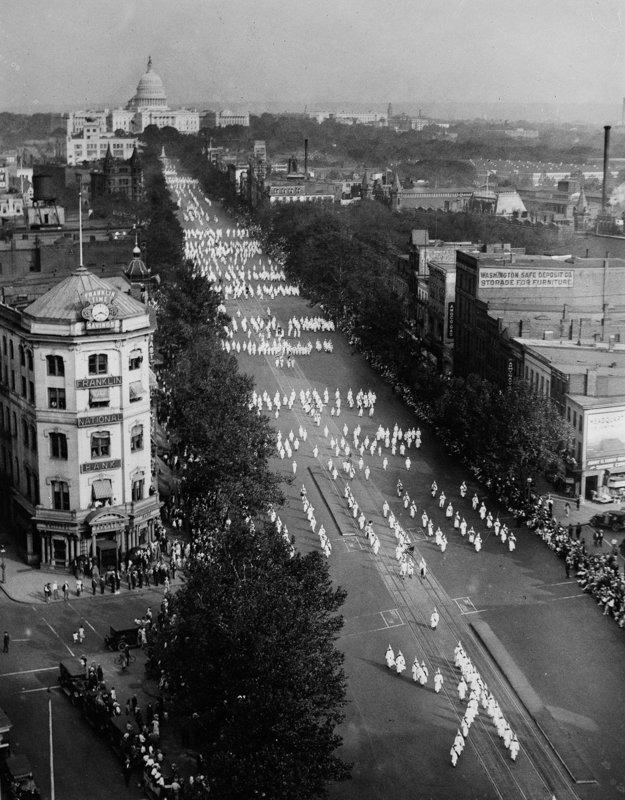
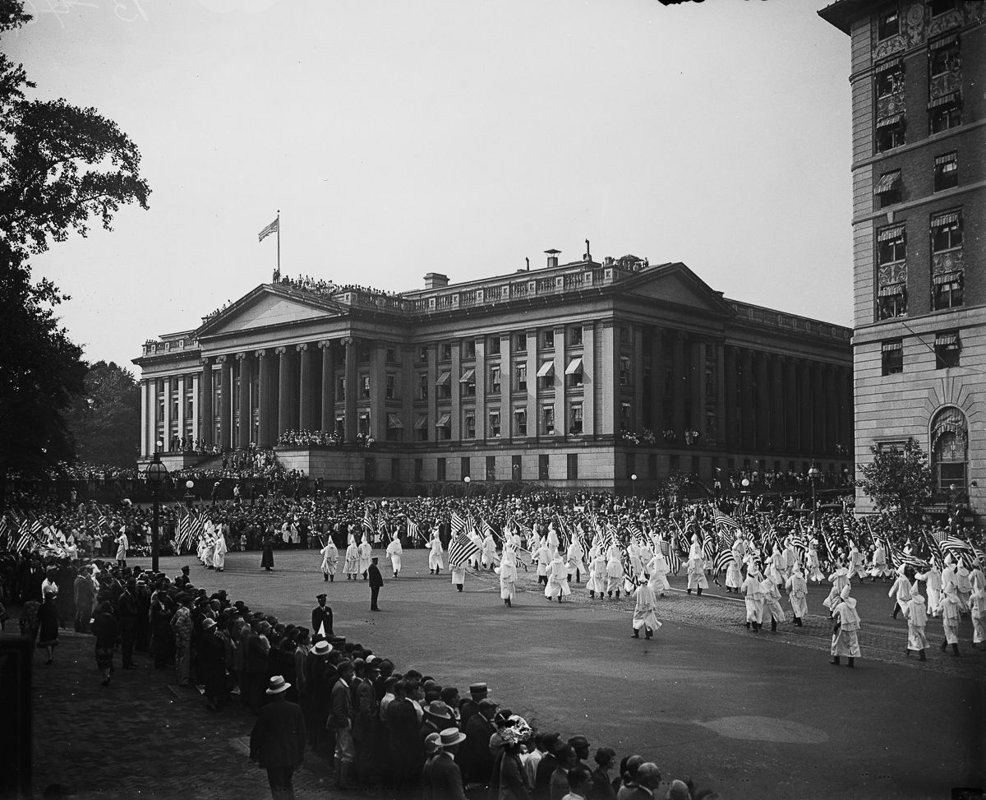
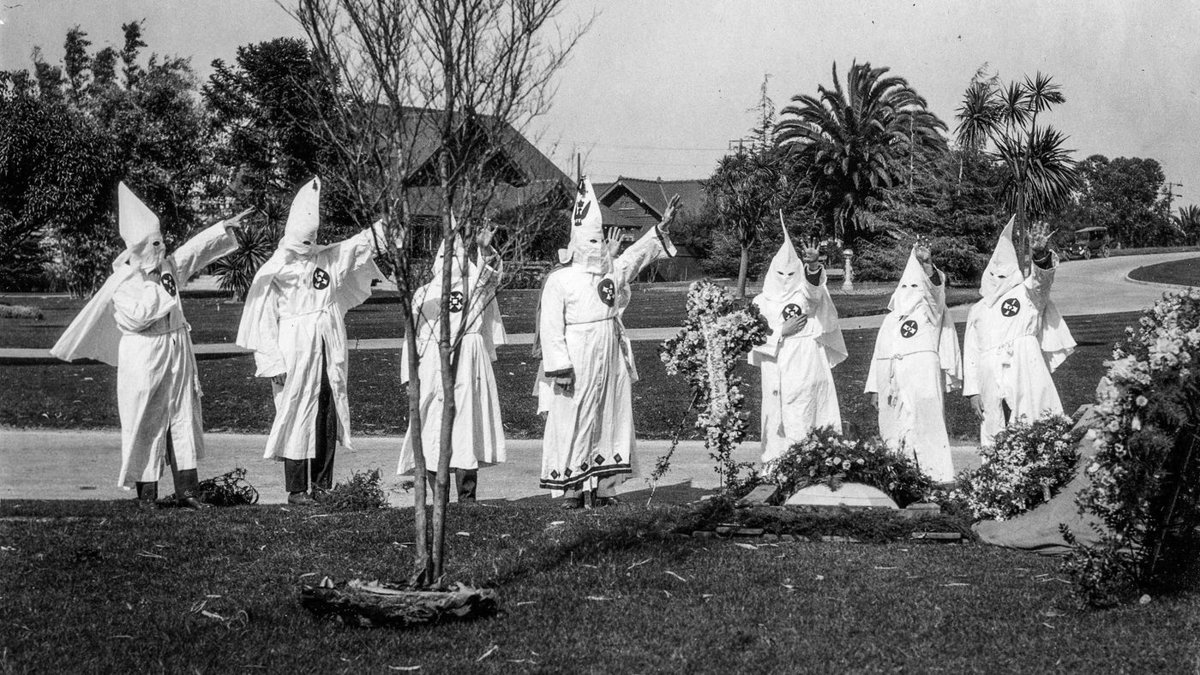 In
the early 1920s, the Ku Klux Klan was at the peak of its membership,
numbering 3 million strong. The growth of the hate group was fueled by
the 1915 release of the silent film Birth of a Nation, which portrayed
members as heroes, coinciding with the widespread xenophobia following
the devastation of World War I.The
KKK's hatred was directed not only against black people, but also
against European Catholic and Jewish immigrants flocking to the U.S.
after the war.In 1925 and 1926, the Klan descended on Washington, D.C. for two massive marches.
In
the early 1920s, the Ku Klux Klan was at the peak of its membership,
numbering 3 million strong. The growth of the hate group was fueled by
the 1915 release of the silent film Birth of a Nation, which portrayed
members as heroes, coinciding with the widespread xenophobia following
the devastation of World War I.The
KKK's hatred was directed not only against black people, but also
against European Catholic and Jewish immigrants flocking to the U.S.
after the war.In 1925 and 1926, the Klan descended on Washington, D.C. for two massive marches.
